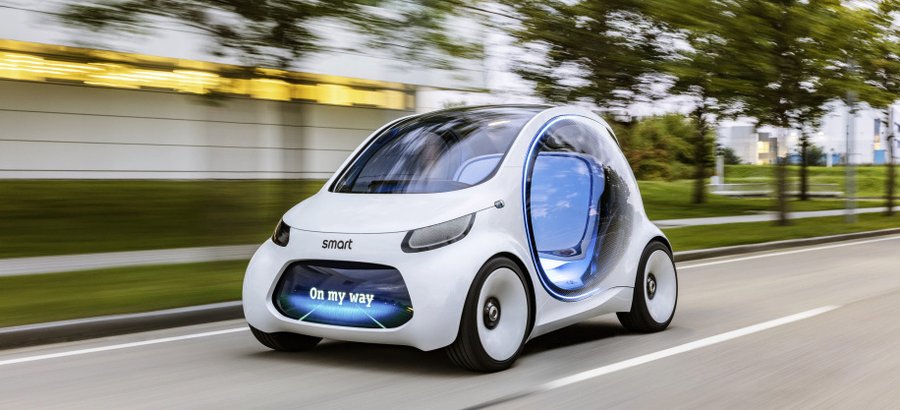Smart Vision EQ Fortwo is the future of autonomous city cars

At the Frankfurt Motor Show in Germany this September, Smart will show off the Vision EQ Fortwo concept, a fully autonomous vehicle focused on urban mobility and user customization.
The car follows the Mercedes-Benz CASE corporate strategy, which includes connectivity (Connected), autonomous driving (Autonomous), flexible use (Shared & Services) and electric drive systems (Electric). That basic idea provides the framework for much of Mercedes' upcoming products. Smart had already announced that it was going all-electric in the U.S. This seems like a further evolution of that move.
Smart sees the Vision EQ Fortwo as part of its Car2go car sharing service. The company claims that someone requests a new car from Car2go every 1.4 seconds. The autonomous technology will use swarm logic to determine when and where a car is likely to be needed before it's requested. That means shorter wait time after calling a ride.
Cars will be requested using a mobile device. The large panel in the vehicle's front fascia displays a number of things, including whether the car is on its way to pick up a passenger or if there's an empty seat available. The two-seat configuration seems limiting, but Smart says it could select extra passengers based on user profiles and final destinations, potentially pairing passengers with similar interests.
The Vision EQ Fortwo will use two lithium-ion battery packs with a total capacity of 30 kWh. The car can charge either with a plug or with inductive charging. When not in use, the Vision EQ Fortwo will autonomously find a charging spot. The swarm intelligence networks with other cars and will charge cars at certain times in order to minimize the pull on the power grid.
The interior and exterior design feature a number of user adjustable elements, but the overall shape is very similar to the current Smart Fortwo. It's a short, upright two-seater focused on maximizing space in a small footprint. The doors are clear and pivot back and up over the rear wheels. (Think reverse scissor doors.) It's meant to save space and prevent situations such as opening a door into the path of a cyclist. There are rose gold accents on the bumpers and the wheels. White body panels are contrasted with dark tinted windows and displays.
The rose gold theme continues inside, accented by a number of black, white and blue parts. The white is intended to give the compact car an open and airy feel. The white seats use manmade leather and are designed to be easy to clean. The bench seat can be separated with a retractable console, just in case you don't want to get too close to the other passenger.
In such a small car, storage is at a premium. Smart has space on the floor and under the bench seat. Luggage can be held down with straps. As should be expected, this autonomous concept completely ditches the steering wheel and pedals, and there is no direct human control over the car. A number of digital displays can be used to connect with the outside world. Smart says that users can customize the displays, but there isn't much detail into what that means.
